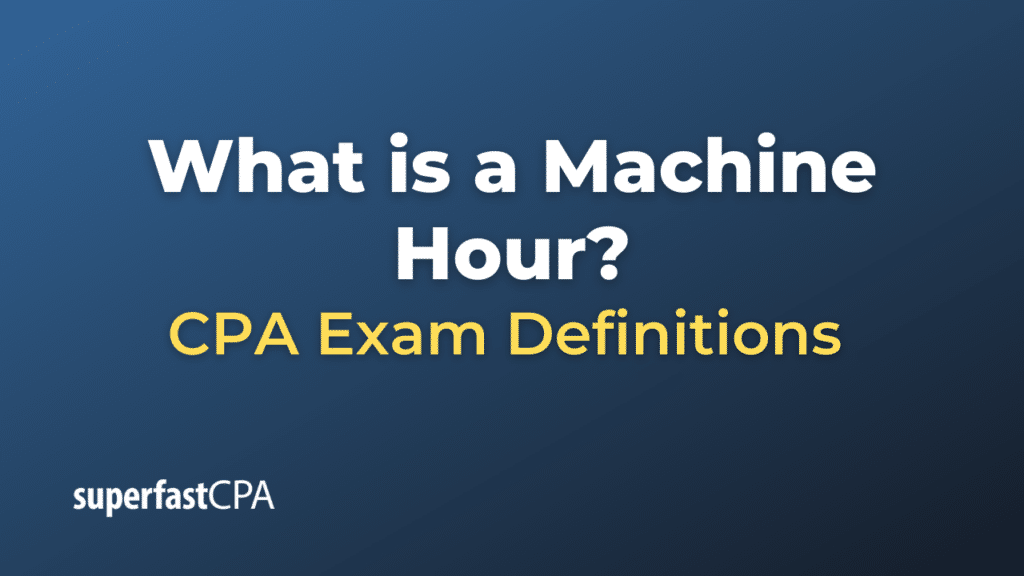Machine Hour
A “machine hour” is a unit of measure that denotes the operational time of a machine during a certain period. It is used in various contexts, such as scheduling and planning manufacturing processes, calculating machine rates for cost accounting, or estimating the depreciation of machinery.
For example, if a manufacturing process requires a specific machine to be operational for 30 minutes to produce a single unit of a product, we can say that the machine hour rate for that product is 0.5 hours per unit.
Machine hours are often used in activity-based costing (ABC), where they may serve as a cost driver. A cost driver is a factor that causes a change in the cost of an activity. For instance, the machine hours needed to produce a product can drive the cost of machinery usage, maintenance, electricity, and even some labor costs. By keeping track of machine hours, a company can more accurately allocate these costs to the products they manufacture.
It’s important to note that the utility of tracking machine hours can vary by industry and the specific operations of a company. For industries or companies where machinery use is a significant part of their operation, machine hours can be a very useful measure. For others, different measures might be more appropriate.
Example of a Machine Hour
Let’s consider a company that manufactures widgets using a particular machine.
This machine can produce 50 widgets in an hour. If the machine runs for 8 hours a day, it can theoretically produce 400 widgets (50 widgets/hour x 8 hours) in a day.
Now, let’s say the company incurs costs of $400 per day to operate the machine, including electricity, maintenance, and depreciation. To calculate the cost per widget, the company can divide the total daily machine cost by the number of widgets produced.
So, $400 ÷ 400 widgets = $1/widget
This means that for each widget produced, $1 of the machine operating cost is assigned. This cost assignment is based on machine hours.
It’s important to note that this is a simplified example, and actual cost accounting can be more complex, including considerations for direct labor, raw material costs, and overhead costs. Also, the actual production might be less than the theoretical production due to factors like machine downtime, quality issues, etc. As always, consult with a financial professional for accurate costing and accounting.












